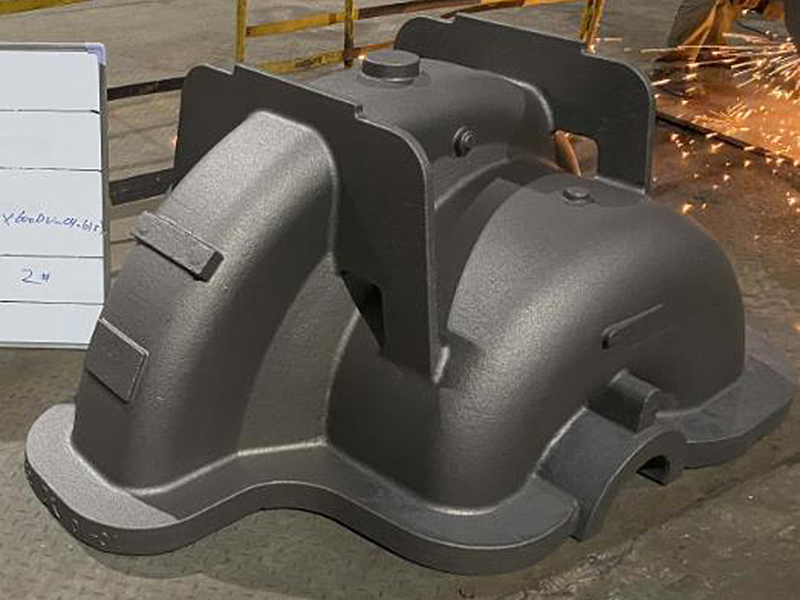Sand Casting Foundry Process
Sand casting is one of the oldest and most versatile manufacturing processes used for producing metal parts. This method employs a mixture of sand, clay, and water to create a mold in which molten metal can be poured. The flexibility of sand casting allows for the production of various shapes and sizes, making it a popular choice in many industries, including automotive, aerospace, and machinery. In this article, we will explore the sand casting foundry process, its advantages, and its applications.
1. Preparation of the Mold
The first step in the sand casting process involves preparing the mold. This begins with the production of a pattern, a replica of the final product that is typically made from wood, plastic, or metal. The pattern is created slightly larger than the final dimensions to account for metal shrinkage that occurs as it cools.
Once the pattern is ready, it is placed in a mold box, which is then filled with a mixture of sand and a binding agent, usually clay or resin. This mixture is compacted around the pattern, creating a cavity in the shape of the desired object. After the sand is compacted, the mold is separated into two halves, allowing for easy removal of the pattern. This process can produce both simple and complex designs, making it an ideal choice for a wide range of applications.
2. Pouring the Metal
After the mold has been prepared, the next step is to pour the molten metal into it. The metal is heated in a furnace until it reaches its liquid state. Various metals can be used in sand casting, including aluminum, bronze, iron, and steel. The selection of metal depends on the desired properties of the final product.
Once the metal is melted, it is carefully poured into the mold cavity. Proper technique is critical during this stage to avoid defects such as air pockets or turbulence, which can compromise the integrity of the casting. Additionally, risers and gates may be included in the mold design to facilitate the flow of metal and accommodate shrinkage as the metal cools.
3. Cooling and Solidification
After the molten metal has been poured into the mold, it is allowed to cool and solidify. This cooling process can range from a few minutes to several hours, depending on the size of the casting and the type of metal used. During solidification, the metal transitions from a liquid to a solid state, and it shrinks slightly. It is essential to control the cooling rate to minimize internal stresses and avoid warpage in the final product.
sand casting foundry process

Once the metal has cooled and solidified, the next step is to remove the casting from the mold. The sand mold can be broken away to unveil the completed metal part. This process is often quick and straightforward, but it requires care to prevent damaging the fragile casting.
After the casting is removed, it typically undergoes further finishing processes. This can include trimming off any excess metal, known as flash, that may have formed during the pouring process. Other finishing operations may include grinding, machining, or surface treatment to enhance the casting's appearance and properties.
Advantages of Sand Casting
One of the primary advantages of sand casting is its versatility. This method can accommodate a wide range of sizes and shapes, from small intricate parts to large components. Additionally, sand casting is relatively low-cost compared to other metalworking processes, particularly for low-volume production. The materials used in sand casting are also readily available and can be reused, which contributes to its cost-effectiveness.
Another advantage is the ability to cast various metals and alloys, making it suitable for diverse applications. Sand casting also allows for the production of complex geometries that may be challenging to achieve using other methods.
Applications of Sand Casting
Sand casting is utilized across many industries, including automotive manufacturing for engine blocks and transmission cases, aerospace for components in aircraft, and general machinery for custom parts. Its ability to produce high-quality, durable components makes it a preferred choice for both prototypes and production runs.
In conclusion, the sand casting foundry process is a testament to the ingenuity of traditional manufacturing techniques, combining simplicity with effectiveness. Its continued relevance in modern manufacturing underscores its value across various industries, ensuring it remains an essential process for producing high-quality metal components.
Post time:نوامبر . 09, 2024 07:42
Next:Exploring the Versatility and Applications of Cerabead Sand in Industries
